Did you know solar panels can now power entire skyscrapers using a technology that’s barely a year old? Yes, the solar revolution is happening, and it's far from what you imagine.
As energy prices soar and climate concerns escalate, understanding solar power is crucial. It's not just about being eco-friendly—it's about rethinking how we consume energy in our daily lives.

Solar panels aren't just for rooftops anymore; they're revolutionizing industries. From helping farmers cut energy costs to enabling off-grid adventures, the versatility of solar energy is transforming every corner of our world. Imagine your car charging while parked, your yacht cruising the seas powered by the sun—solar technology has no bounds. But that’s not even the wildest part…
The new solar advancements are making waves far beyond mere cost savings. They're breaking ground in uncharted territories like desert installations that harness abundant sunlight to green barren expanses and solar fabrics that weave energy capture into everyday objects. These innovations aren't science fiction; they're our reality. What happens next shocked even the experts…
Most people think of solar panels as a means to reduce electricity bills, but that’s just the starting point. Beyond financial savings, solar panels significantly increase the value of a home. Did you know that homes equipped with solar panels sell 20% faster and at 17% more than those without? But there's more to unpack...
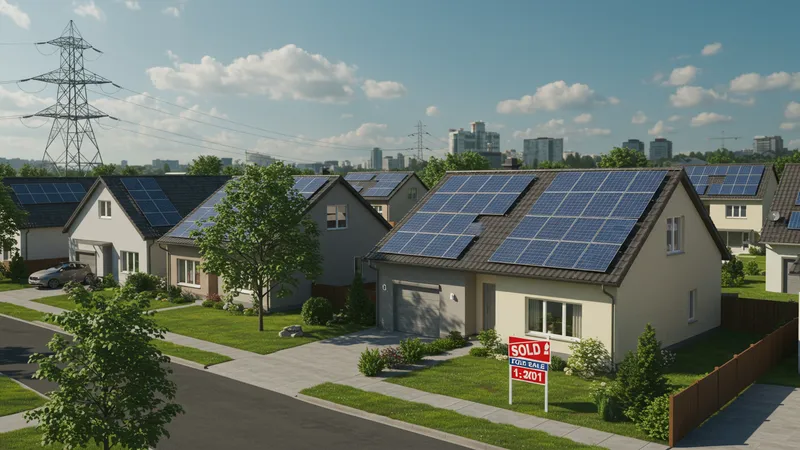
A major, yet less-discussed advantage of solar panels is energy independence. Imagine a future where you're not reliant on an unstable grid—a reality for many countries whose aging infrastructure results in frequent power outages. Beyond the environmental perks, this energy autonomy can be a powerful asset in negotiating energy consumption on your terms. And yes, there’s a twist...
The environmental impact of solar panels is profound. Each panel drastically reduces greenhouse gas emissions by offsetting traditional coal-powered energy. In fact, one home using solar energy can cut carbon emissions by over three tons per year. But what if I told you there’s even more to this story...?
Solar power isn’t just reshaping individual lives; it’s setting a commercial revolution. Businesses adopting solar panels report enhanced brand image alongside employee pride in working for environmentally-conscious companies. The kicker? Solar-powered businesses save approximately 20% annually on electricity—funds that can be reinvested right back into their growth. But, there’s another layer to this transformation...
You may think solar panel installation costs are prohibitively high, but the reality might surprise you. Thanks to government incentives and decreasing technology costs, the average price has plummeted by over 50% in the last decade. But here's where it gets even more interesting...
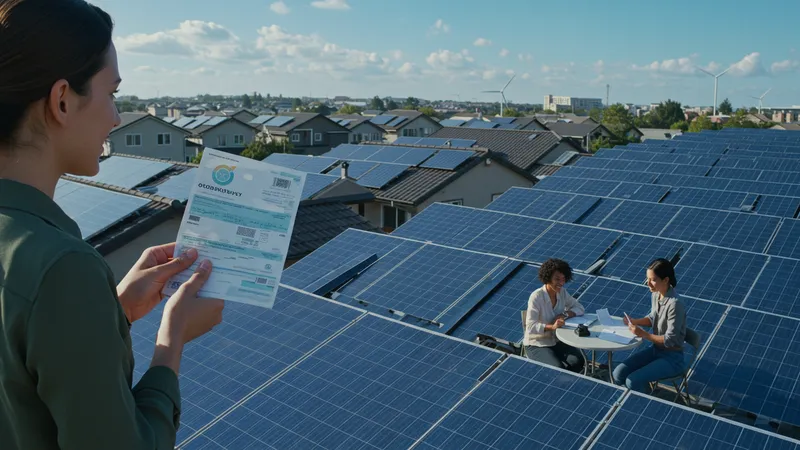
Few know that beyond these decreasing costs, financing options have exploded onto the scene. With solar panel leasing and power purchase agreements, homeowners can install panels with little to no initial investment. Imagine cutting your electricity bill without the upfront dollars—it’s happening right now. But that’s not all...
Many are unaware of the overlooked maintenance savings. Solar panels require minimal care, typically less than $20 a year for basic cleaning and occasional inspections. Over two decades, this minimal expenditure pales in comparison to the soaring costs of traditional energy upkeep. But the benefits go deeper still...
The cost savings of solar are influencing energy pricing models at a macro level. Experts predict a new era where solar solutions drive the restructuring of energy markets, potentially offering even lower costs for solar adopters as conventional energy sources fade. But there’s more on the horizon...
When you think solar, you probably envision PV cells on rooftops, but there’s a whole world of solar innovations blowing past that image. Consider transparent solar panels that integrate seamlessly into windows, turning skyscrapers into massive energy generators. Sound futuristic? Think again...

Floating solar farms are pushing boundaries and making waves, literally. By utilizing bodies of water, these installations maximize unused space while reducing water evaporation and preventing algae growth. This dual advantage can be a game-changer for water-scarce regions. And there’s another surprising contender...
In a quirky twist, solar-powered agriculture is radically transforming farming, especially in sunny, arid regions. Solar panels not only energize operations but also shade crops, reducing soil temperature and moisture loss. Farmers are seeing bumper harvests and reduced energy costs—an unexpected boon. But what if that’s only the beginning?
Solar highways are not just science fiction; these innovative roads integrate solar technology and electric vehicle charging, turning infrastructure into power stations. Imagine roads that light themselves and charge cars on-the-go. It’s not just an idea—it’s a reality in the making. Yet, the journey doesn’t stop there...
We usually associate solar panels with rooftops, but a mounting number of novel applications are challenging this notion. Rural electrification projects are using solar to bring power to remote areas where traditional grids are infeasible. The societal change is remarkable, bringing education and healthcare into the 21st century. But that’s not the whole picture...

Mobile solar technologies are roaming the planet and providing energy where it's needed most—disaster zones. Portable solar panels are powering relief efforts in areas cut off from traditional power. From temporary hospitals to clean water projects, this adaptable technology is saving lives. But the surprises don’t end here...
In the air, solar-powered drones are being employed to traverse challenging terrains where people can't easily go. They provide essential services like mapping, disaster assessment, and environmental monitoring. This airborne solar solution is mapping our future in ways we’ve only dreamed of. Yet, there’s one more element to this astounding capability...
Solar textiles are weaving energy capture into our clothing and accessories, turning everyday objects into mini power stations. Imagine charging your phone with your jacket while you walk in the sun. This futuristic vision is already in wearable prototypes that may soon hit the market. But what’s around the corner might astonish you...
The solar industry isn't just transforming energy systems; it's rewriting the job market narrative as well. Over 250,000 Americans are now employed in solar jobs, an astronomical increase poised to surge as demand climbs. But that’s just a part of the trend...

Solar training programs are springing up across the globe, equipping future generations with renewable energy skills. This educational shift is not only expanding job opportunities but also preparing our youth for careers in sustainability. The promise of stability in an eco-conscious market is alluring. Yet, there’s another twist...
The accessibility of solar is reducing costs for installation and operation, driving adoption among small businesses. This accessibility spurs new business models, fostering entrepreneurial ventures in energy consulting and solar SaaS platforms, birthing a robust new job sector. Still, there’s a surprising facet to reveal...
Some fear automation’s rise could stifle job growth, but solar is countering this narrative. As systems become more sophisticated, they demand skilled personnel for installation, monitoring, and optimization. Solar isn’t just powering homes; it’s powering careers, forecasting a lively job landscape. And there’s more to consider...
Early misconceptions about solar power often persist: that they’re only effective in sunny regions or that they can’t work at night. These myths couldn’t be farther from reality. Solar power today functions efficiently even in temperate climates. But that’s only the tip of the iceberg...

Batteries bring solutions for night-time energy use, storing daytime solar energy to be used after dark. Yet, few realize the technological strides made in this area, with advancements in battery capacity redefining energy security. There’s an unexpected additional benefit to this technology...
Another myth suggests that solar panels can damage roofs. In fact, they often protect roofs from the elements and provide an extra insulating layer, enhancing a building’s longevity and efficiency. But there’s an even more surprising insight at play...
Some continue to argue that solar panels aren’t aesthetically pleasing. Modern designs, however, integrate panels seamlessly into structures, becoming an architectural feature without detracting from curb appeal. But the evolution of solar aesthetics doesn’t end there...
Government incentives are pivotal in accelerating solar energy adoption. The solar Investment Tax Credit (ITC) in the United States allows homeowners to deduct 26% of installation costs from their taxes. The result? Dramatic growth in residential solar installations. But there’s more to know...
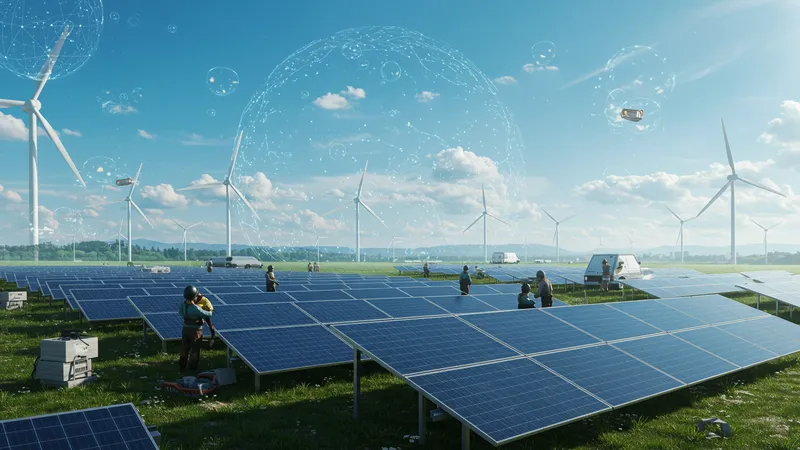
Countries worldwide are setting high renewable energy targets, driving massive investment into solar infrastructure. These policies foster competitive markets, lowering costs, and leveling the playing field for new entrants. The geopolitical shift towards renewables is unprecedented. Yet, a deeper impact looms...
An unsung consequence of these policies is energy democratization, empowering consumers to become producers with grid-feed-in tariffs and solar subsidies providing tangible returns on their renewable investments. But there’s still more ahead for consumer empowerment...
The future of solar policy might center on localized microgrids, decentralizing energy distribution and promoting community resilience. This shift propels a paradigm change in traditional energy policy. Solar isn’t just part of the conversation—it’s redefining the framework. And there’s a surprising extension to this evolution...
For all the environmental gains solar provides, its economic impact is equally formidable. Globally, investments topping $300 billion annually are reshaping industries and economies. But there's a financial nuance few see...

The cost-saving benefits extend over a solar panel's lifespan, potentially cutting lifetime energy expenses by over $40,000. The long-term savings are considerable and make solar decisions not merely environmental friendly, but financially prudent. Yet, there are more economic layers to unpack...
The solar industry is propelling new fiscal models, such as energy trading platforms where consumers sell excess energy back to the grid. This commerce redefines producer-consumer dynamics, allowing every participant to benefit economically. But there’s another economic twist at hand...
As solar technologies evolve, they promise to lower future energy rates, a dream scenario for economies burdened by energy imports. The ripple effect of solar extends well beyond immediate users, fostering economic resilience on a scale we’re just beginning to understand. And astonishingly, there’s more to discover...
While solar power’s reduction in carbon emissions is well-documented, its ability to preserve finite resources often goes unmentioned. By easing reliance on fossil fuels, it preserves natural reserves for future generations. But that’s not its only virtue...
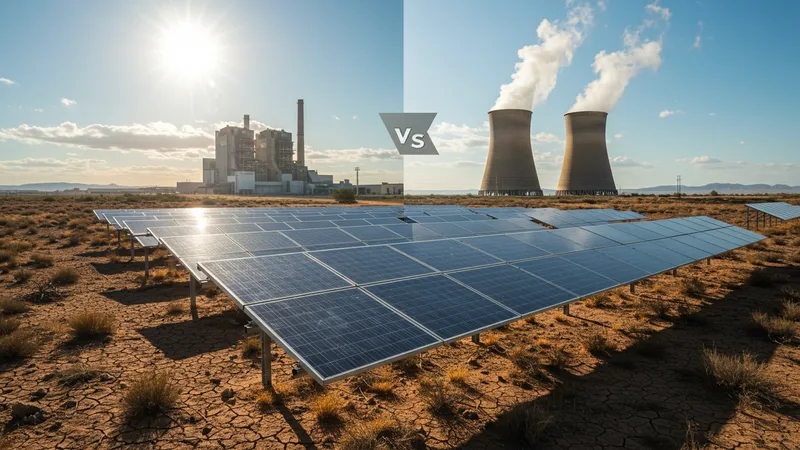
Solar power drastically reduces strain on water resources. Unlike fossil-fuel energy, which requires substantial water for cooling, solar panels use no water in generating electricity. This conservation is vital in drought-prone areas facing intense water scarcity. But here’s another environmental angle...
Addressing the facility management side, solar installations have minimal land requirements when compared to traditional energy plants, all while generating comparable energy outputs. This reduction in land impact conserves natural landscapes. But still, the full picture awaits revelation...
Furthermore, as recycling processes improve, solar panel components are increasingly being repurposed, heralding the rise of a circular solar economy. These advancements ensure that the industry’s environmental benefits stretch beyond energy production. Yet, even this is just a fraction of the solar narrative...
The move towards solar energy is redefining urban landscapes, shaping cities into smart environments. Solar infrastructure is seamlessly integrating with urban planning, ensuring energy self-sufficiency across diverse neighborhoods. But there’s more than meets the eye...
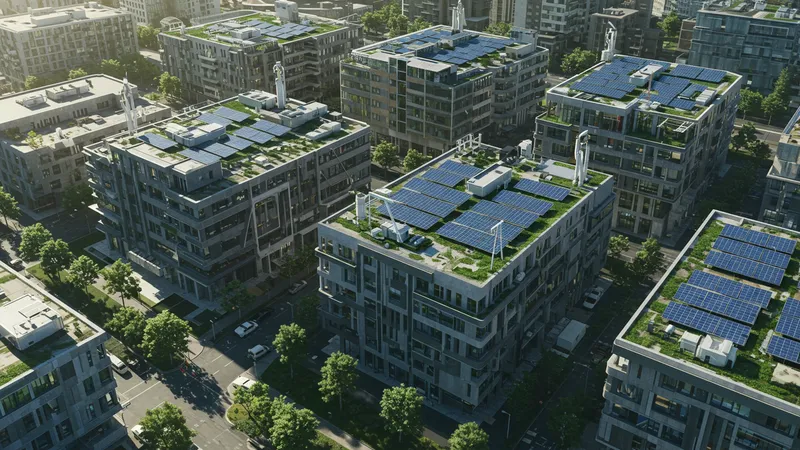
With buildings evolving into ‘energy hubs', new developments are incorporating solar power into architectural designs from the ground up. The result? Constructions that generate energy on-site, contributing to a city’s grid efficiency. And there’s another layer to explore...
An interesting subset is community solar projects, which offer neighborhoods access to solar power without the need for individual installations. This community-centric approach democratizes solar access, fostering social equity in urban centers. But believe it or not, there’s yet another element in play...
Urban agriculture is a growing discipline benefiting from solar power. Rooftop gardens powered by solar technology are becoming vital, providing fresh produce and reducing urban heat. The confluence of solar and urban agriculture is forging a greener, energy-efficient cityscape. And the potential keeps unfolding...
Solar power stands at the forefront of energy strategies aimed at decarbonizing economies. As the push for net-zero intensifies, solar provides a critical renewable solution. But its role extends further than immediate carbon reduction...
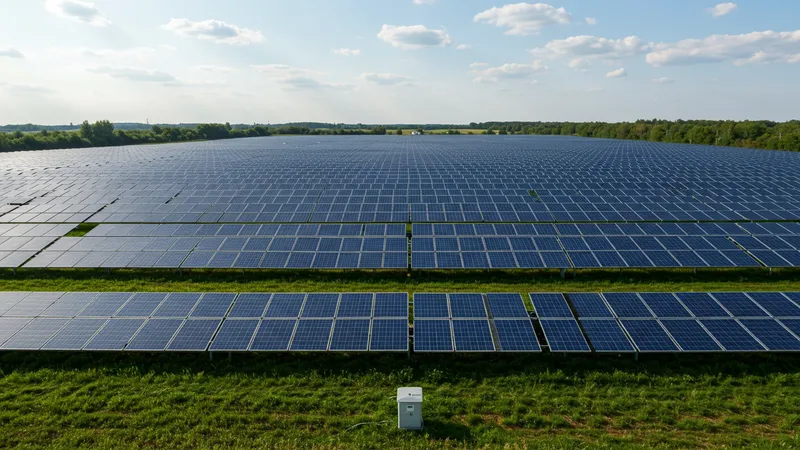
The transition to a solar-centric energy landscape is pivotal in the global effort towards achieving international climate goals. By replacing fossil fuels, solar helps avert millions of metric tons of carbon dioxide annually. But solar’s climate potential doesn't stop there...
The inherent scalability of solar solutions allows them to adapt to diverse landscapes and climates, making them an effective tool across varied environmental conditions. This adaptability enhances their utility in broader decarbonization frameworks. But there's more to solar's environmental efficacy...
As the decarbonization movement gains momentum, expect continued innovation in solar technology, making it even more efficient and cost-effective. The subsequent reduction in carbon footprints will transcend expectations, underscoring solar's vital role in sustainable development. And, incredibly, the impact goes deeper still...
The emergence of innovative solar business models is altering energy landscapes, offering unprecedented consumer flexibility. Whether it’s subscription-based solar services or peer-to-peer solar trading, new models invite participation from all corners. Yet, this is just the start...
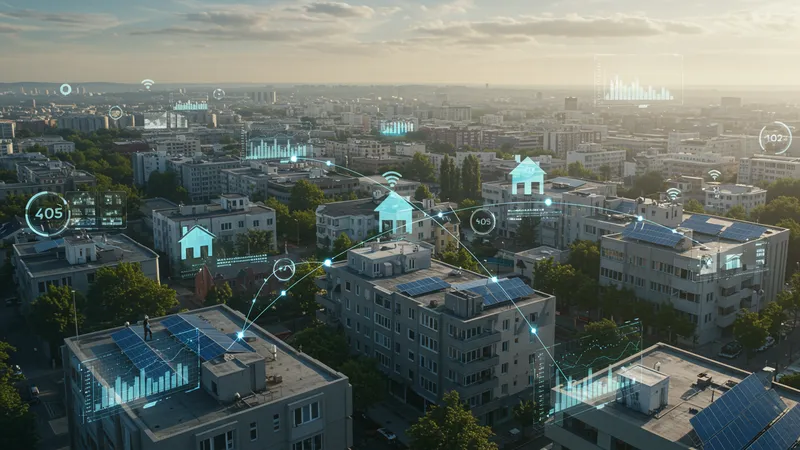
Sophisticated solar-as-a-service platforms now replace upfront capital requirements with manageable monthly fees, broadening accessibility. This shift is transforming consumer engagement with renewable energy. But there’s more driving this momentum...
Virtual power plants pool distributed solar resources, aggregating power from numerous systems to mimic a large power plant. Managing energy flows across local and national grids, they enhance grid stability and offer several revenue streams to participants. But there’s another pivotal aspect...
These evolving business models employ cutting-edge technology, including AI and blockchain, to optimize efficiency and transparency. This tech integration offers unprecedented control and trust in energy transactions, setting the stage for the 21st-century solar economy. There’s an unexpected dimension to this trend...
As solar technology ventures into uncharted territories, the innovations we see today are set to transform tomorrow’s reality. With predictions of solar electricity sharing becoming the norm, the horizon is bright. But what else lies ahead?

The development of perovskite solar cells promises enhanced efficiency at reduced costs, forecasting a potential revolution in solar manufacturing processes. Such advancements may reshape the solar landscape. And there’s more to these forward-looking innovations...
In parallel, the concept of energy positivity is emerging, where buildings generate more energy than they consume. These achievements are tangible, offering a blueprint for a viable, sustainable future. But the innovation story of solar is just beginning...
As space exploration becomes more prevalent, solar technology may power extraterrestrial settlements, ensuring a sustainable human presence beyond Earth. This fascinating prospect signals a solar era where the sky is truly the limit. The mind-boggling potential of solar is unprecedented...
Efficiency is the key metric in evaluating solar panels, but is often misunderstood. Recent breakthroughs have increased average silicon panel efficiency from 15% to over 20%. This evolution is more significant than it seems...

Higher efficiency translates into better energy output from the same panel area, which is crucial, particularly in space-limited urban environments. But that’s not where the efficiency story ends...
Emerging technologies like bifacial solar panels can harness energy from both sides, drastically boosting electricity generation. This innovation is redefining efficiency metrics as we know them. But there's a twist in understanding efficiency...
Though some alternatives achieve greater efficiency, market leaders balance cost and efficiency to optimize real-world applications. The pursuit of high-efficiency models is electrifying the solar development game, laying the foundation for its future growth. But the final piece of the puzzle remains...
And here we reach the dramatic close: solar energy is not merely a contemporary fad—it’s an indispensable powerhouse for our future. As the world races towards sustainable solutions, embracing solar technology is not just advantageous but imperative for environmental resilience and economic viability. So, take your part in this energy revolution. Share this article, spread the knowledge, and consider solar adoption for your own home or business. The future is ours to power.